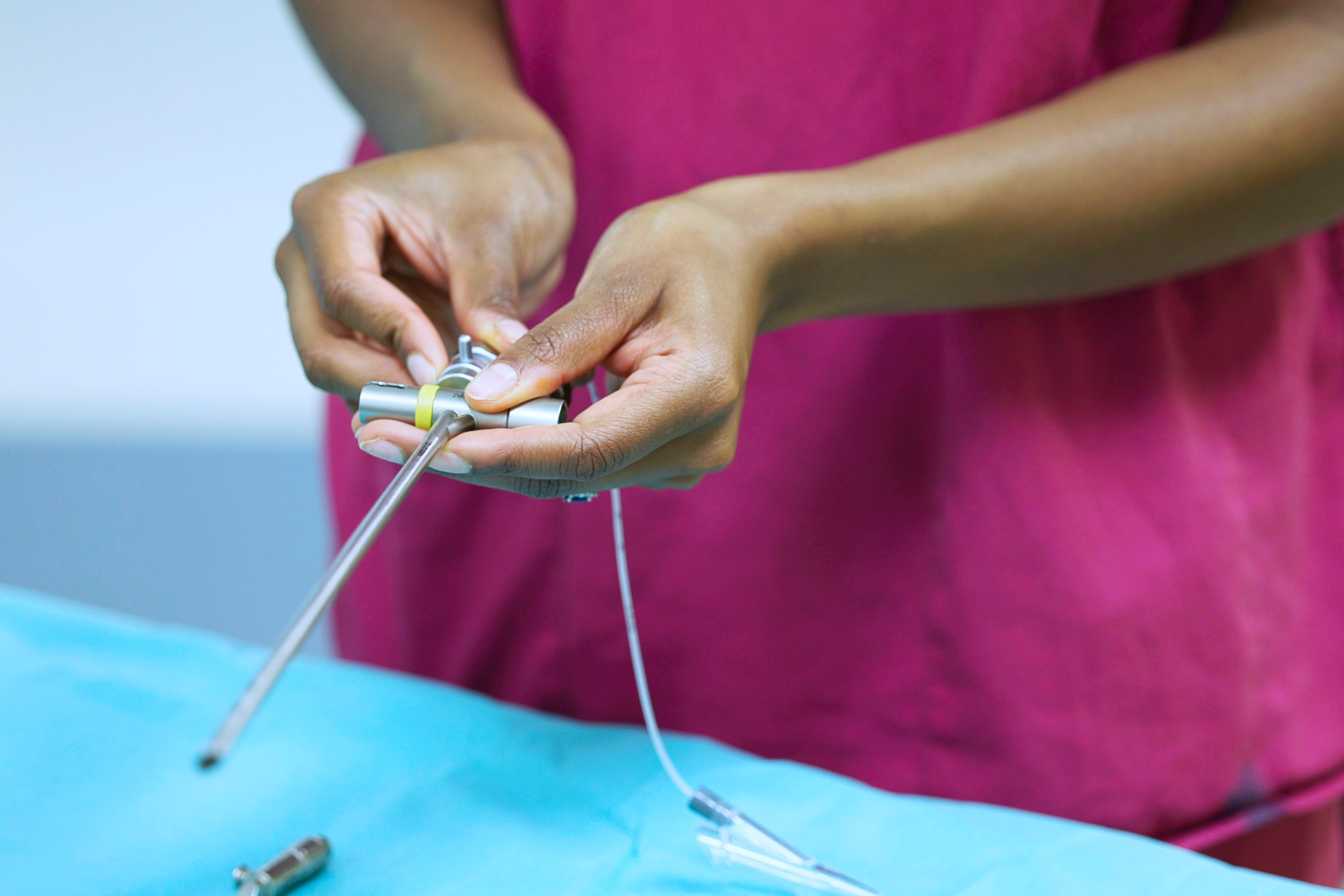
Paediatric Ventilating Bronchoscope Assembly
Paediatric Rigid BronchoscopyUse this resource in conjunction with your real-world training

Experience Summary
In this 360-degree video, observe the process of assembling a paediatric ventilating bronchoscope.
Clinical Context
A paediatric ventilating bronchoscope is a specialised rigid instrument used primarily by ENT surgeons and anaesthetists to examine, diagnose, and manage airway pathologies in children. It is particularly essential in cases of suspected foreign body aspiration, airway obstruction, subglottic stenosis, or congenital airway anomalies. In addition to visualisation, it allows for controlled ventilation during the procedure, making it a vital tool in managing the paediatric airway safely.
Paediatric ventilating bronchoscopes are most commonly used in emergency and elective settings to manage airway emergencies. Foreign body aspiration, a frequent paediatric emergency, often necessitates urgent rigid bronchoscopy for diagnosis and removal. The ventilating design allows continuous oxygenation and CO₂ monitoring during the procedure, which is critical given the limited physiological reserve in children. These scopes are also used in diagnosing airway malformations, assessing vocal cord mobility, and managing airway stenosis with interventions such as dilation or laser treatment. A skilled, multidisciplinary team is essential due to the shared airway and potential for rapid desaturation.
Assembly Steps:
- **Preparation and Equipment Check:**Begin by checking the integrity of all bronchoscope components. These include the bronchoscope barrel (sized appropriately for the child's age and weight), the light carrier, ventilating side arm, telescope (optical rod lens system), and the connecting tubing for jet or manual ventilation.
- **Attach the suction catheter:**This can be used to suction secretions and deliver medications such as adrenaline.
- **Insert the Hopkins rod:**Carefully insert the Hopkins rod through the bronchoscope. Ensure it is securely seated and aligned for clear visualisation. Some procedures may use an eyepiece or camera head for video monitoring.
- **Connect the Ventilation System:**Attach the ventilating side arm to the bronchoscope. Connect this to either a jet ventilation system or a manual bag. Ensure all connections are airtight. If jet ventilation is used, confirm the injector is functioning and that pressures are appropriately set for paediatric use.
- **Check Patency and Function:**Flush the system with air to confirm patency and inspect for any leaks. Ensure the scope is clean, dry, and ready for insertion.
- **Patient and Team Preparation:**Coordinate with the anaesthetic team for patient induction and paralysis, as rigid bronchoscopy requires a still, apnoeic field. Position the patient with the neck extended (“sniffing” position) and ensure monitoring and emergency airway equipment are on standby.
Learning Outcomes
- Identify the individual pieces of equipment in the paediatric rigid bronchoscopy set.
- Observe the assembly of the bronchoscope and the Hopkins rod.
- Observe the assembly of the bronchoscope and optical forceps.
External Resources
